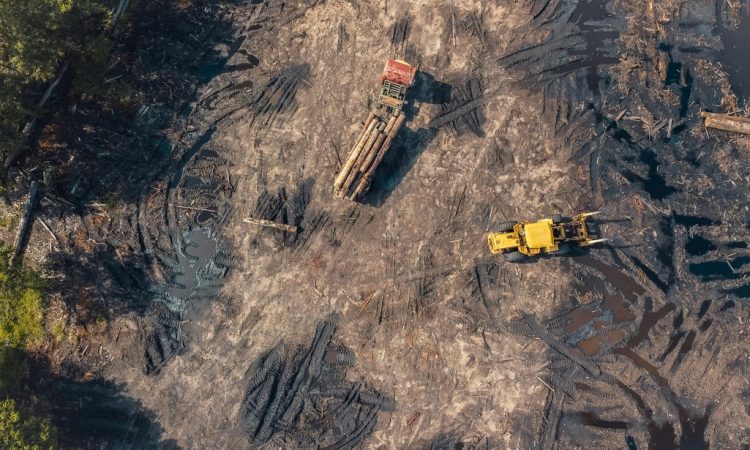
Queensland deforestation: Unseen scope 3 carbon risk

The hidden emissions in your supply chain
When forests are cleared in Queensland, Australia, the impact extends far beyond regional ecosystems. According to The Guardian, 332,015 hectares of land were cleared in 2022–23. Of that, 44% occurred in Great Barrier Reef catchment areas and 21% in remnant forest, previously untouched ecosystems. As these emissions flow downstream into global supply chains, they often go unrecorded, contributing to a significant Scope 3 carbon risk for companies sourcing from the region.
This level of deforestation releases massive volumes of stored carbon into the atmosphere and diminishes the land’s long-term carbon sequestration potential. The principal cause? Agricultural expansion, particularly beef production, a key pillar of Australia’s export economy.
Understanding scope 3 emissions
Carbon emissions fall into three categories:
- Scope 1: Direct emissions from owned or controlled sources (e.g., fuel combustion on-site)
- Scope 2: Indirect emissions from the production of purchased electricity
- Scope 3: All other indirect emissions in the value chain, including land use, purchased goods, transport, and waste (GHG Protocol)
In many industries, Scope 3 emissions make up over 70% of total climate impact. They’re also the hardest to quantify, largely because they depend on supplier data and upstream practices that are difficult to track.
Why Queensland’s deforestation should be on the corporate radar
Deforestation in Queensland is accelerating biodiversity loss and increasing carbon emissions that become embedded in global supply chains. If your business sources products linked to Queensland agriculture, those emissions may already be a part of your company’s footprint, even if you’re not reporting them.
The Statewide Landcover and Trees Study (SLATS) provides satellite-based tracking of vegetation loss in Queensland. However, most emissions accounting platforms fail to incorporate this data, leaving critical blind spots in sustainability reporting. This gap can expose businesses to reputational risk and non-compliance with evolving ESG regulations.
A shift in expectations: regulatory and market pressure
The expectation to disclose Scope 3 emissions is now a regulatory reality:
- CDP requires companies to quantify upstream emissions and explain any exclusions.
- The ISSB has introduced global standards for climate-related disclosures.
- The EU’s CSRD mandates Scope 3 disclosure for a growing number of companies.
- The UK’s SECR framework also requires emissions transparency for large entities.
As stakeholder scrutiny increases, failing to report known emissions from land use change is increasingly seen as irresponsible or misleading.
How eco-shaper supports scope 3 strategy
eco-shaper is a modular ESG platform that helps organisations manage Scope 3 emissions with greater accuracy and accountability. Through AI-powered analytics, businesses can trace upstream emissions by category and geography, providing a far clearer picture of their environmental impact.
It also enables companies to integrate region-specific risk data into reporting workflows, adding crucial ecological context to carbon accounting. Built-in tools for supplier engagement streamline data collection and transparency across complex value chains. Internally, teams can drive awareness using eco-shaper’s impact calculators, fostering an informed culture of climate action.
Most importantly, eco-shaper supports alignment with frameworks such as the GHG Protocol, CDP, ISSB, CSRD, and the SECR, making it a reliable partner for ESG compliance.
A strategic advantage, not just compliance
Land-use emissions have historically been underreported. But as standards evolve, addressing them is quickly becoming a differentiator. Companies that proactively include upstream ecological impact in their carbon accounting:
- Strengthen climate reporting credibility
- Reduce legal and reputational risk
- Build supply chain resilience
- Meet investor and customer expectations
ESG tools like eco-shaper help close the data gap and offer pathways to smarter emissions management.
Final word
Queensland’s land clearing isn’t a fringe issue; it’s a signal of how emissions can enter supply chains invisibly. Businesses connected to Australian agriculture, food, logistics, or retail need to be aware of how these upstream emissions could affect their compliance, credibility, and climate strategy.
With eco-shaper, you gain the infrastructure to detect and act on Scope 3 risks that would otherwise remain hidden.
Start with better data. Start with eco‑shaper.

Be a net-zero hero
At eco-shaper, we drive action on climate change and streamline carbon footprinting. For example, we can help calculate emissions across the entire ecosystem that companies work across and produce automated reporting based on outcomes. Contact us to be part of our research group on
